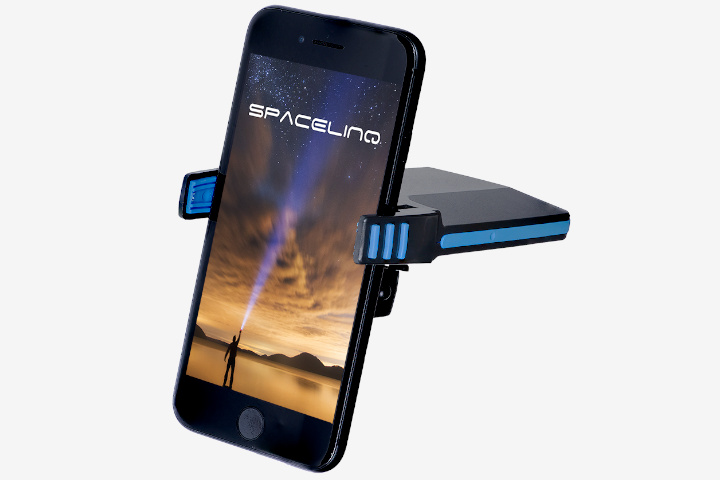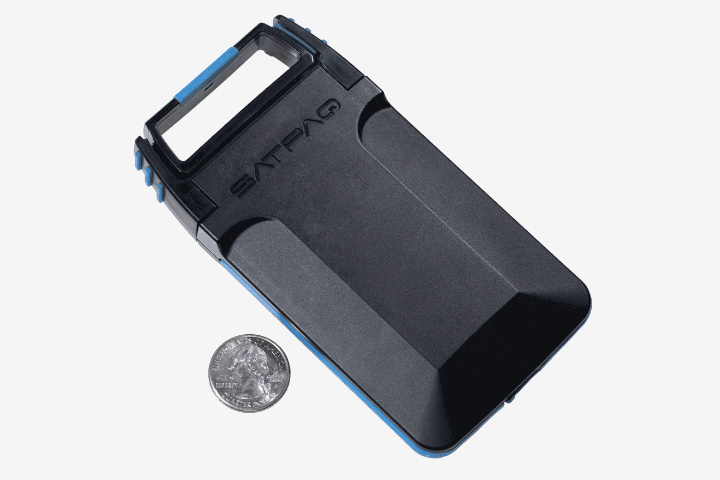Losing your cell signal while outdoors can be annoying — but if you’re out fishing, hiking, or hunting, your cellphone signal can mean the difference between life and death. Injuries, being lost, and any other number of hazards can mean we need to call for help — but if there’s no signal to carry your message, then what do you do?
Thankfully, there’s a simple way to supercharge your phone’s signal, and make sure your messages reach their destination. The SatPaq phone accessory, from Silicone Valley-based company Higher Ground, aims to achieve this, and promises to connect your phone with faraway satellites in order to bounce your message back into the phone network. It’s simple to use — the SatPaq simply clips onto the outside of your phone and connects via Bluetooth to the SpaceLinq app. From there, compose and fire off your message, making sure your antenna is pointing at a satellite.
Unlike other satellite phones, which often use moving low-Earth orbit satellites (LEOs) that can wander out of range, the SatPaq uses GEO satellites. These satellites are geo-locked, so they never move from their position and are much easier to find — and more reliable if you’re in an emergency situation. These GEO satellites also have the benefit of being much cheaper to use than LEO satellites — so there’s no monthly fee, and you’ll only pay for the message credits you use.
The system has been made for the person on the go, so it weighs just 4 ounces, and is slim enough to slip into a backpack or a pocket. There’s a long-lasting rechargeable battery, too, and Higher Ground claims a single charge will send between 150-200 messages, and can retain charge for 4-5 months when sitting in storage. There are other utility options available as well, tied to the SpaceLinq app. Acclaimed weather app Dark Sky provides weather forecasts, while you’re also able to share your location and messages via Twitter.
Should you run into an emergency situation, you’ll be able to broadcast an emergency signal using the device, and even get basic first aid advice from the onboard medical A.I., Dr. Dex. And since SatPaq runs on pay-as-you-go messages, you don’t need to worry about a monthly charge, and can set the messages to automatically top-up when running low.
SatPaq starts from $249, and is available for iPhones from the iPhone 6 upward (running at least iOS 10). Android support is coming soon. At present, the device only covers the U.S.
Editors' Recommendations
- When will Apple release iOS 18? Here’s what we know
- We now know when Apple is adding RCS to the iPhone
- No, the Journal app on your iPhone isn’t spying on you
- The top 7 bestselling phones of 2023 were all … you guessed it
- How to save text messages on iPhone and Android




